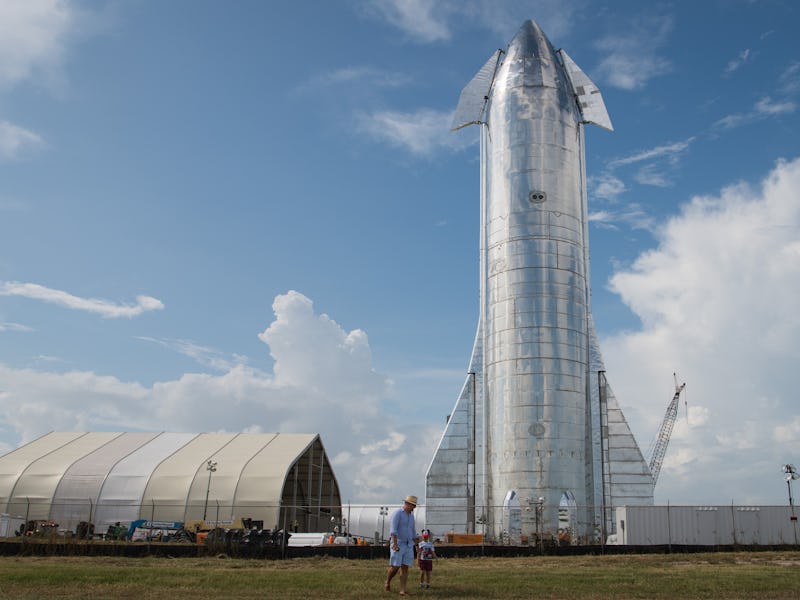SpaceX Starship: stunning image shows how it may deploy 240 Starlink craft
A new visualization shows the SpaceX Starship releasing new Starlink satellites.

The Starship, SpaceX's giant Mars-bound rocket, could help the firm get its Starlink internet constellation online.
The ship, currently under development at the Boca Chica facility in Texas, is designed to transport over 150 tons or 100 people into space at a time. A new visualization, shared Monday by a Twitter user called "Neopork85," imagines what this ship would look like if it was tasked with sending up to 240 Starlink satellites at once.
The capability could be a big boost for the nascent Starlink constellation, designed to offer high-speed, low-latency internet with the use of a transceiver the size of a pizza box. It reaches these high speeds by using a large number of satellites, orbiting just 550 kilometers from the Earth's surface. SpaceX has sent up nine batches of around 60 satellites each, the first one in May 2019, but it has applied for permission to launch up to 42,000 satellites.
Starship could help it move faster. When Musk unveiled the ship's predecessor in September 2017, he explained that it would be able to cover Falcon 9's missions as well as more ambitious ones to Mars and beyond. Where the Falcon 9 can lift over 50,000 pounds to low-Earth orbit, the Starship can lift over 220,000 pounds at once.
"Neopork85"'s visualization, shown below, demonstrates how these would stack into place:
The image shows four stacks of Starlink satellites, similar to those seen on Falcon 9 missions:
The Falcon 9 stack.
The image received a warm response from members of the space community.
"So much internet!" Chris Bergin, the managing editor of NASASpaceFlight, wrote in response. "Would be the perfect payload for the early operational cargo missions."
Tim Dodd, a YouTuber who hosts the channel "Everyday Astronaut," responded to concerns that Starship would be the "wrong tool for the job" by asking: "If the cost to launch is 1/4 the price of the [Falcon 9] and can carry 4 times the satellites... how is that anything but the right tool for the job?"
Indeed, the Starship is designed to reduce the price of rocket flights by a large amount. In November 2019, CEO Elon Musk said that the operational costs of flying Starship would be around $2 million per flight.
But one of the main issues could be deploying the satellites in space. SpaceX's website shows how the cargo bay could open up to release satellites:
Dodd explained that the team could use a similar spin deployment technique as used with Falcon 9-based launches. Here's how it looks with current launches:
The Starship, Dodd explained, could achieve something similar by angling the payload adapter 30 degrees. They would then have to rotate the vehicle, angling it to ensure it's perpendicular to the horizon, then pitch to start and let go.
While Musk has stated SpaceX's aim to use Starship for satellite launches, it's unclear when this would take place. In July 2017, SpaceX vice president of commercial sales Jonathan Hofeller declared the firm's goal is to get launching satellites by 2021.
The Inverse analysis – A Starship-powered Starlink mission could help get the constellation online fast. SpaceX has gradually increased the frequency of launches, with a six-month gap between the first two launches reducing to a nine-day gap for the most recent two launches.
SpaceX is aiming to start service for the northern United States and Canada this year, and a public beta test is scheduled to take place. But with Musk already talking about a second version of Starlink with even lower latency, the ability to send up as many satellites as possible could prove vital.